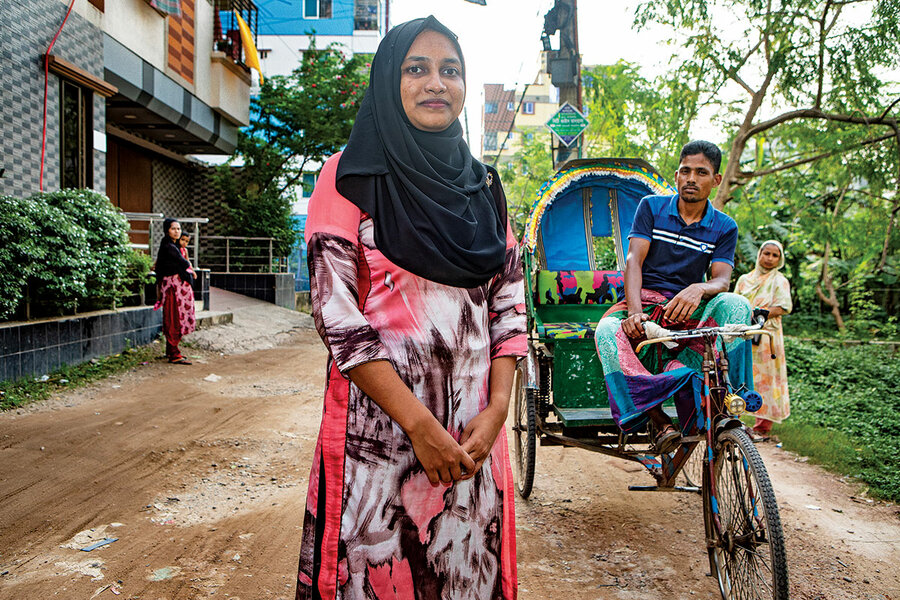Tapping the spirit of ‘The Climate Generation’
For more than a few people, the subject of climate change is reason enough to turn the page or reach for headphones. But for the individuals you’ll meet in this issue, it’s an impetus to do what most people do when problems crop up: roll up their sleeves and get to work.
In the Nov. 6 issue of the Monitor Weekly, we launched “The Climate Generation,” our series about young people around the world for whom a shifting climate is not a point of contention so much as an ever-present facet of life. We’ll take you to the Canadian Arctic, Barbados, Portugal, Namibia, Bangladesh, Turkey, Germany, and the United States, guided by reporters Sara Miller Llana and Stephanie Hanes, photographers Melanie Stetson Freeman and Alfredo Sosa, and project editor Clara Germani. These places are on the forefront of climate challenges – be it in courts of law or flooded communities. You’ll hear more about that soon. What you won’t hear a lot about is polarization or eco-anxiety; coursing through these stories is a can-do attitude infused with purpose and the expectation of progress.
Sara and Melanie found optimism in drought-stricken Namibia. Young Indigenous Guardians in remote villages in a warming Arctic spoke of opportunity amid crisis. Everywhere, our reporters found active youth networks that transcended geographical barriers.
“I was seeing positive connections across the world that give me hope,” Clara says. “There was not a single place we traveled to where there wasn’t a sense of a solutions focus. They’re taking the first steps of living amid global warming.”
The roots of this series lie in children’s rights. Sara was moved by “Children in Darkness,” a 1987 Monitor series that Melanie photographed and that focused on exploitation of children for labor, combat, and sex trafficking. Then came the 1989 United Nations Convention on the Rights of the Child, with its breakthrough recognition that the world’s youngest inhabitants had inherent political, social, economic, and cultural rights. What is the biggest challenge to those rights today? After months of discussion with Stephanie, Sara says, “we decided that climate really is the story.” (Indeed, the U.N. issued new guidance in August after reviewing its child rights convention in light of climate change.)
Thus began eight months of demanding reporting that took a global village of writers, photographers, layout artists, graphic artists, editors, and, of course, sources. There were endless logistics, hundreds of phone calls, questionable hotels, taxing long-haul flights across continents and shorter hopscotches on tiny planes in the Arctic. There was also the hospitality and gift of time from individuals who shared their world with people they’d never met but came to trust to tell their story. And therein lies the true power of this tale – the spirit of a rising generation.
Melanie recalls one moment in Bangladesh. “Farzana [pictured above] was the last young climate activist we met,” she says. “She was so confident when speaking about changes the world needs to make to combat climate change. She made me feel like we’re going to be OK.”







